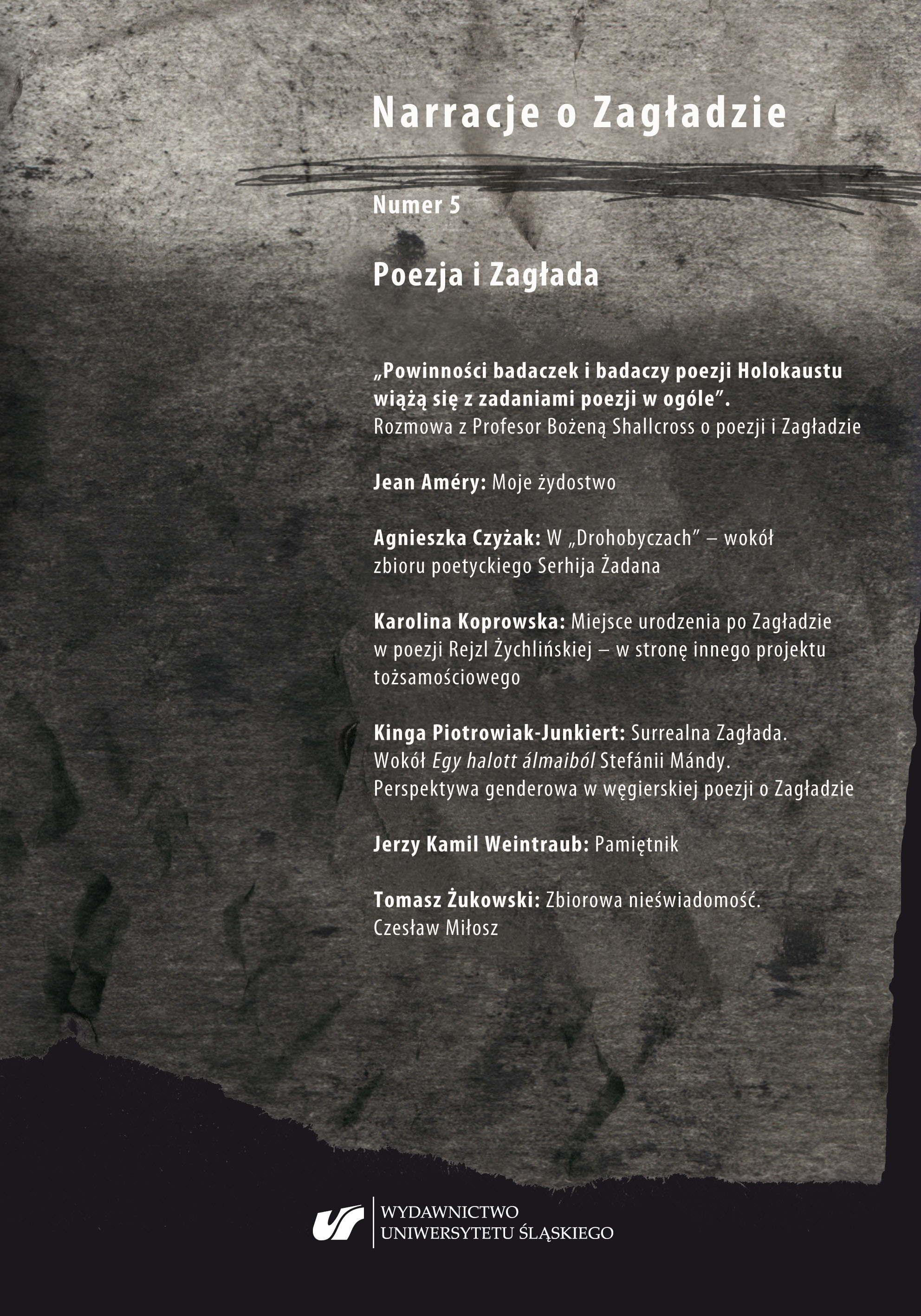Okolice Zagłady
Karolina Koprowska: Postronni? Zagłada w relacjach chłopskich świadków. Kraków, Universitas, 2018, ss. 216.
Neighbouring the Shoah
Karolina Koprowska: Postronni? Zagłada w relacjach chłopskich świadków. Kraków, Universitas, 2018, ss. 216.
Author(s): Gaweł JanikSubject(s): Jewish studies, Polish Literature
Published by: Wydawnictwo Uniwersytetu Śląskiego
Summary/Abstract: This text reviews Karolina Koprowska’s Postronni? Zagłada w relacjach chłopskich świadków [Bystanders? The Shoah in Peasant Accounts]. By means of Hilberg’s triad of perpetrator–victim–witness, the review analyses the shifts in perception of bystanders, inaugurated by Claude Lanzmann’s Shoah and two texts: Jan Błoński’s “Biedni Polacy patrzą na getto” [“Poor Poles Look at Ghetto”] and Jan Tomasz Gross’s The Neighbors. Moreover, this analysis emphasises the fact of growing academic interest in the “peripheries of the Shoah,” taking place in the early 21st century, and investigates recent publications in Polish Holocaust studies that postulate the re-definition of the witness as a cultural category. According to the review, Koprowska’s book can be devoted into two parts: theoretical one and analytic one. The former gathers different conceptualisations of a bystander, introduces the reader to the situation of Polish countryside in the times of the Shoah, and describes the strategies of bystanders, who are referenced as locals inherently belonging to the topography of a peasant landscape. The latter – and more important – part is dedicated to the category of silence, but also to that which leaves something unsaid. Koprowska distinguishes three types of such a trope: the repressed story (exemplified by Paweł Łoziński’s Miejsce urodzenia [Birthplace]), the strategy of “looking but not seeing” (exemplified by the applications to “Describe my countryside” competition), and descriptions abundant in metaphors and generic links to fairy tale (Tadeusz Nowak’s oeuvre). The conclusions of the review are supplemented by the reference to Mordechaj Canin’s Przez ruiny i zgliszcza. Podróż po stu zgładzonych gminach żydowskich w Polsce [Through Ruins and Remnants. A Journey through One Hundred Jewish Communities in Poland after the Holocaust], which explores the positions of Polish peasants regarding the Shoah.
Journal: Narracje o Zagładzie
- Issue Year: 2019
- Issue No: 5
- Page Range: 390-403
- Page Count: 15
- Language: Polish

